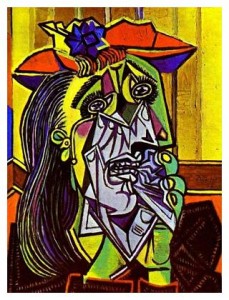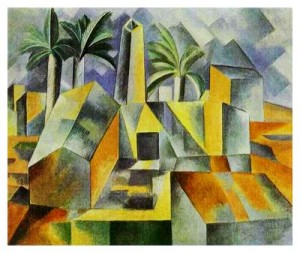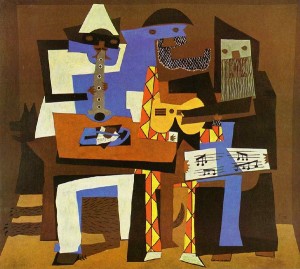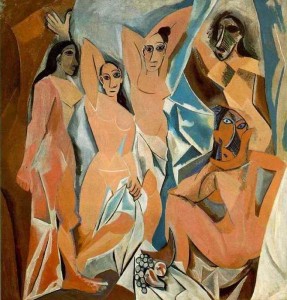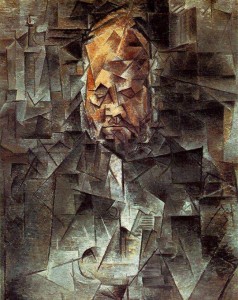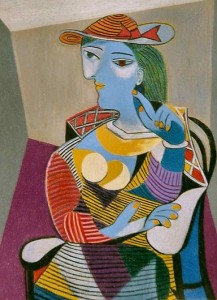Cubism became one of the most influential visual art styles of the early Twentieth Century. This starts in 1907 when Pablo Picasso painted a portrait of five prostitutes. However it wasn’t who he had painted as this was common for artists to hire prostitutes to paint as it was seen as disrespectful to paint a nude image of your wife or of someone else’s wife. It was the way in which he had painted them which really got people talking, starting the era of cubism and the gateway to modern art.
 I fiind this painting very interesting because the way it has been done is as if these women aren’t human but also in a way to protect their identity so that no one can see who these women actually are. I do think Picasso did this just as an experiment, to test the way the spectator thinks, which came to be very successful as now any one of his paintings will be sold for millions of dollars as each is unique and there is only one copy of it. I find this painting visually interesting because it doesn’t show too much attention to detail. It gives the basic shape and outline of each woman’s figure unlike biblical painting that people are used to seeing on top of church ceilings [from 1500s]. I like that this painting doesn’t objective these women as many other painters have done so many times in the past. To me this painting is embracing the human form and physique yet somehow it managed to deface the women in the painting too. I’m unsure whether or not distorting these women’s faces was an experimentation of different shapes or rather a means to say that these women’s faces don’t matter and only their bodies do. I have mixed feelings about this painting as you can see it from many different perspectives and can take from it both positively and negatively.
I fiind this painting very interesting because the way it has been done is as if these women aren’t human but also in a way to protect their identity so that no one can see who these women actually are. I do think Picasso did this just as an experiment, to test the way the spectator thinks, which came to be very successful as now any one of his paintings will be sold for millions of dollars as each is unique and there is only one copy of it. I find this painting visually interesting because it doesn’t show too much attention to detail. It gives the basic shape and outline of each woman’s figure unlike biblical painting that people are used to seeing on top of church ceilings [from 1500s]. I like that this painting doesn’t objective these women as many other painters have done so many times in the past. To me this painting is embracing the human form and physique yet somehow it managed to deface the women in the painting too. I’m unsure whether or not distorting these women’s faces was an experimentation of different shapes or rather a means to say that these women’s faces don’t matter and only their bodies do. I have mixed feelings about this painting as you can see it from many different perspectives and can take from it both positively and negatively.
Pablo Picasso was inspired by Etienne-Jules Marey [1830 – 1904] and Eadweard May Bridge. These two also created a new style of art called montage. This came from Russia as well as the theory of an active audience when watching films. Here the Russians believed that an audience watching a film want to get involved and think actively and take from a film what they want whereas the old American belief was that all audiences’ were passive and were just fed something and they took it all in and did what the advertisement or film told them to do.

